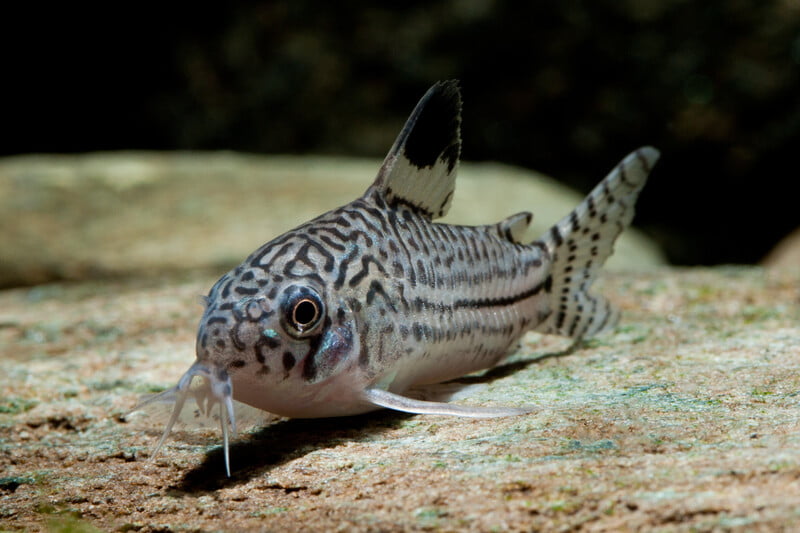
Corydoras trilineatus (Julii Cory)
Corydoras trilineatus, commonly known as Julii Cory or Three-Lined Cory, is a popular species of freshwater catfish belonging to the family Callichthyidae. These fish are native to South America and are often found in the upper Paraná River basin, including parts of Brazil and Argentina.
Here are some key characteristics and information about Corydoras trilineatus:
Appearance:
- The Julii Cory has a distinct appearance with a pale background color and dark markings.
- It is named "Three-Lined Cory" due to the three dark lines running along its body. These lines can vary in intensity and may appear broken.
- Their eyes are often surrounded by a dark mask-like pattern, giving them a unique and attractive look.
Size:
- Adult Julii Corydoras typically grow to a size of 2 to 2.5 inches (5 to 6.5 cm).
Habitat:
- In their natural habitat, Corydoras trilineatus inhabit slow-moving waters, including rivers and tributaries. They prefer areas with sandy or fine substrate.
Behavior:
- Julii Corys are social and should be kept in groups of at least six individuals. They are peaceful and can be housed with other non-aggressive fish.
Tank Requirements:
- A well-planted aquarium with hiding spots and soft substrate is suitable for Corydoras trilineatus.
- They prefer slightly acidic to neutral water conditions with a pH ranging from 6.0 to 7.5 and a temperature between 72 to 78°F (22 to 26°C).
Diet:
- These catfish are omnivores and have a varied diet. They will accept a combination of high-quality flake food, sinking pellets, and live or frozen foods like bloodworms and brine shrimp.
Breeding:
- Julii Corys are egg layers, and breeding them in captivity is possible. Provide a separate breeding tank with soft, slightly acidic water and encourage the fish with a varied diet. The adults do not exhibit parental care, so it's recommended to remove the eggs to a separate container for hatching.
Note:
- It's important to note that there is sometimes confusion between Corydoras trilineatus (Julii Cory) and Corydoras julii. The latter is another species with similar characteristics, and both are often referred to as Julii Corys in the aquarium trade.
When keeping Julii Corys in captivity, it's crucial to provide proper care, a suitable environment, and a balanced diet to ensure their well-being.



